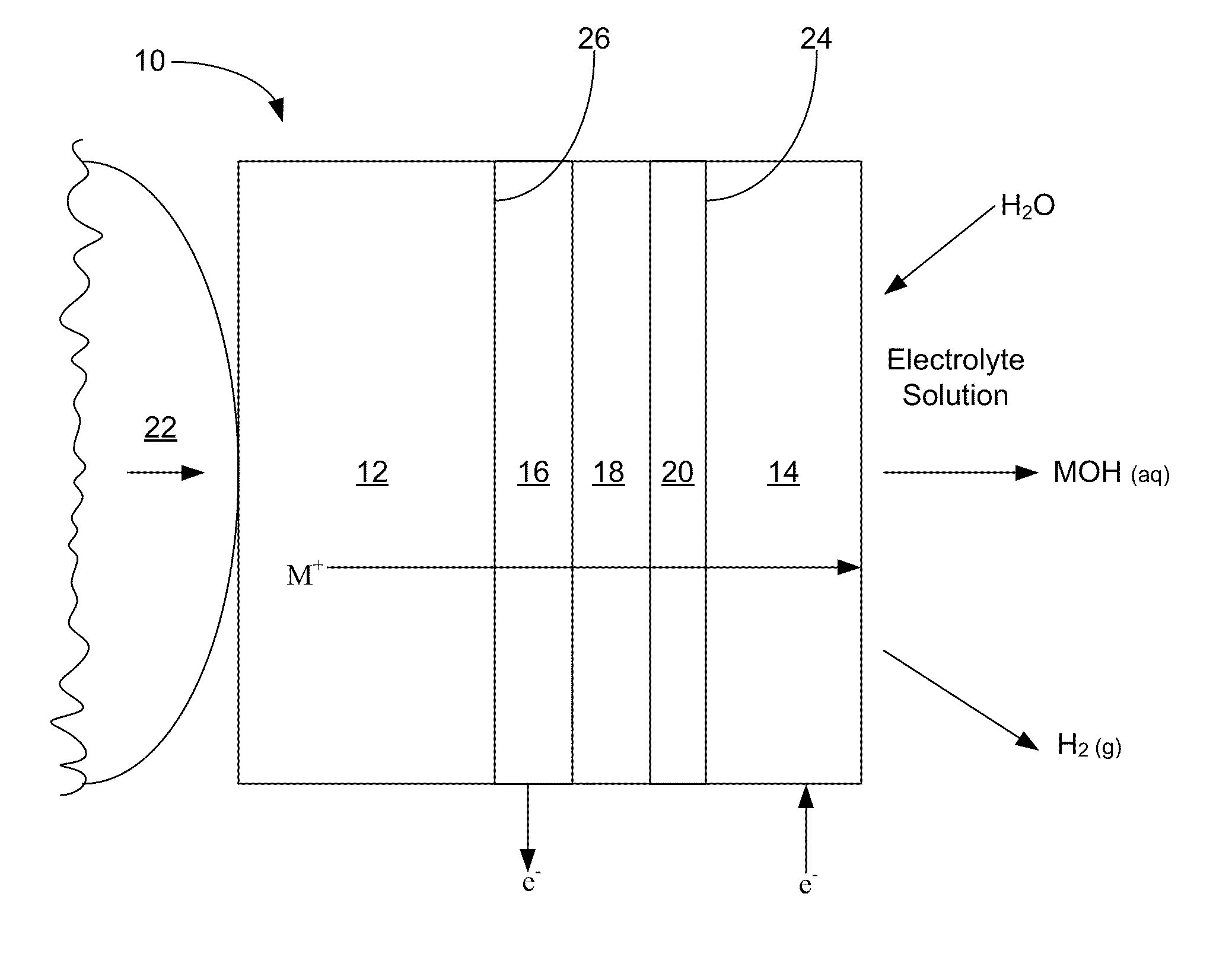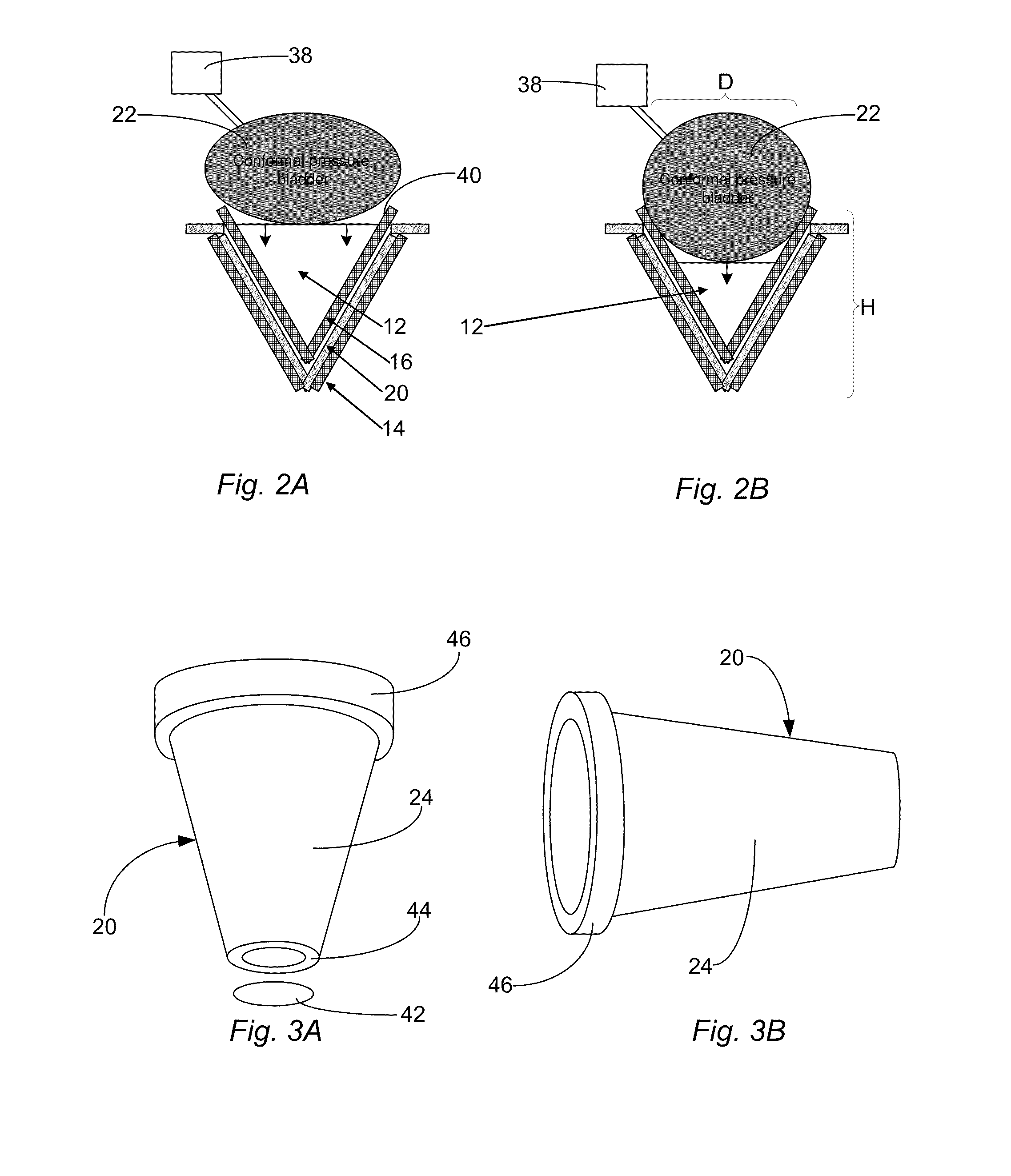Alkali metal seawater battery
- Summary
- Abstract
- Description
- Claims
- Application Information
AI Technical Summary
Benefits of technology
Problems solved by technology
Method used
Image
Examples
example 1
[0074]In a first example, 2 galvanic cells were prepared according to the described methods. While each cell was substantially identical, a first cell comprised a lithium anode and a LiSICON membrane while a second cell comprised a sodium anode and a NaSICON membrane. Both cells were placed in a 4% sodium chloride aqueous solution in which the pressure of oxygen was not specifically controlled. In this example, the current density of the first and second cells was then plotted against cells' voltage, as shown in FIGS. 6A and 6B, respectively. Specifically, FIG. 6A illustrates that the voltage of the first cell containing a Li anode was measured to be between about 2.5 and about 3 volts. Additionally, FIG. 6B illustrates that the voltage of the second cell containing a Na anode was measured to be between about 2 and about 2.5 volts. Accordingly, this example, shows that, in at least some embodiments, the lithium cell may produce a higher voltage where the cell comprises a lithium ano...
example 2
[0075]In a second example, FIG. 6C contains a graph in which the cell voltage of two cells are plotted against the cells' current density. While the cells used for this graph are substantially similar, the first cell comprises a LiSICON membrane (45B) while the second cell comprises a glass ceramic membrane (GC). Despite the cells' similarities, FIG. 6C shows that the first cell with the LiSICON membrane (45B) produced a higher voltage than did the second cell, which had the glass ceramic membrane (GC). While this difference in cell voltage may be due to a variety of factors, it is theorized that the first cell's increased voltage is a result of its LiSICON membrane having a lower interfacial resistivity than the glass ceramic membrane in the second cell.
example 3
[0076]In a third example, FIG. 7 illustrates a graph depicting estimated specific energies of different sizes of the described cell as a function of the cells' membrane cone height and diameter. In this example, the weights used for the calculations included the weights of a lithium anode, the current collectors, and a 300 micron thick membrane. Based on the estimates shown in FIG. 7, that figure shows that, in some embodiments, the cone height is preferably greater than about 4 cm and that the specific energy of the cells may also increase with the cones' diameters.
PUM
 Login to View More
Login to View More Abstract
Description
Claims
Application Information
 Login to View More
Login to View More - Generate Ideas
- Intellectual Property
- Life Sciences
- Materials
- Tech Scout
- Unparalleled Data Quality
- Higher Quality Content
- 60% Fewer Hallucinations
Browse by: Latest US Patents, China's latest patents, Technical Efficacy Thesaurus, Application Domain, Technology Topic, Popular Technical Reports.
© 2025 PatSnap. All rights reserved.Legal|Privacy policy|Modern Slavery Act Transparency Statement|Sitemap|About US| Contact US: help@patsnap.com



